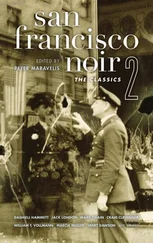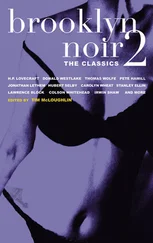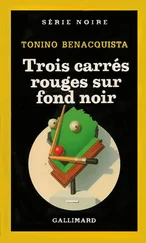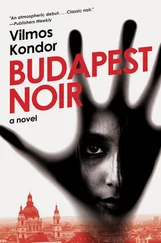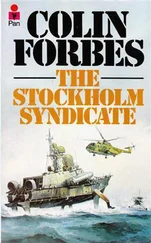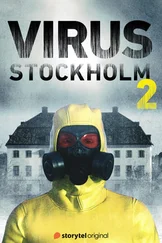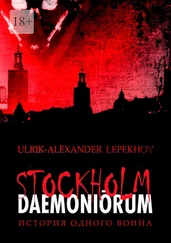Caroline Åberg - Stockholm Noir
Здесь есть возможность читать онлайн «Caroline Åberg - Stockholm Noir» весь текст электронной книги совершенно бесплатно (целиком полную версию без сокращений). В некоторых случаях можно слушать аудио, скачать через торрент в формате fb2 и присутствует краткое содержание. Город: New York, Год выпуска: 2016, ISBN: 2016, Издательство: Akashic Books, Жанр: Детектив, на английском языке. Описание произведения, (предисловие) а так же отзывы посетителей доступны на портале библиотеки ЛибКат.
- Название:Stockholm Noir
- Автор:
- Издательство:Akashic Books
- Жанр:
- Год:2016
- Город:New York
- ISBN:978-1-61775-297-1
- Рейтинг книги:3 / 5. Голосов: 1
-
Избранное:Добавить в избранное
- Отзывы:
-
Ваша оценка:
- 60
- 1
- 2
- 3
- 4
- 5
Stockholm Noir: краткое содержание, описание и аннотация
Предлагаем к чтению аннотацию, описание, краткое содержание или предисловие (зависит от того, что написал сам автор книги «Stockholm Noir»). Если вы не нашли необходимую информацию о книге — напишите в комментариях, мы постараемся отыскать её.
Copenhagen Noir
Helsinki Noir
Stockholm Noir — читать онлайн бесплатно полную книгу (весь текст) целиком
Ниже представлен текст книги, разбитый по страницам. Система сохранения места последней прочитанной страницы, позволяет с удобством читать онлайн бесплатно книгу «Stockholm Noir», без необходимости каждый раз заново искать на чём Вы остановились. Поставьте закладку, и сможете в любой момент перейти на страницу, на которой закончили чтение.
Интервал:
Закладка:
She wanted to cry.
She watched him take off his sneakers and head right for the kitchen. He opened the cupboard door, took out the vodka bottle, and poured himself a drink.
“Want some?”
She nodded.
Johnny sank down by the kitchen table. He pushed aside the newspaper and took a swig. “Damn, it’s slippery outside.Sirens were going off constantly out there.”
“They announced the dangerous conditions on the radio.”
He pointed at his nose. “But I didn’t slip on the sidewalk. I fell on her goddamn outside stairs. This hurts like hell!”
“Poor thing,” she said. She took a sip of vodka. It both warmed and burned her throat. “What about...?”
He gave her a wry smile. “My nose kept bleeding all the way to her door. I had to rummage around inside the house to find something to stop it.”
“Did she notice you inside?”
“She kept getting up and looking around, just like last night. Up and down the stairs like a yo-yo. But she never saw me.”
Anneli covered her eyes with her hands. “I hate this. I hate all of this.”
His glass slammed down on the table. Drops of vodka flew out. “Don’t think for a moment I don’t hate it too!”
“I know...” she whined.
“We both agreed to this. So don’t start saying it was all my idea.”
She shook her head heavily.
“It’s for her own good!” he yelled.
A short sob escaped her throat. “Yes.”
“And we need the money. We need it now! Not two years from now. Not a decade from now. Right now! With that view, we can get four to five million.”
“I know.”
“If only she hadn’t been so stubborn We had to do it. She forced us into it.”
“Yes.”
He lowered his voice but still did not look at her. “She’ll be fine, Anneli.”
She pulled a paper towel off the roll and blew her nose. “Yes,” she said again.
The doorbell rang. A sharp, demanding sound. They stared at each other. She saw fear in his eyes.
Don’t open it, he mouthed.
But she’d already gotten up and was looking out the peephole. Two people were standing outside. One man and one woman. She opened the door.
The two people pulled out their police identification.
“Are you Anneli?” the policewoman asked.
She nodded.
“May we come in?”
She stepped aside to let them past. Something had happened. Something worse than she’d imagined. She turned around, glared at Johnny.
“I’m afraid I have some bad news,” the policewoman said. She had short, almost stubbly blond hair. “It’s your mother, Maj Lindberg.”
A white blaze lit her skull. With a wail, she began to pound Johnny with her fists like hammers.
“You bastard! What the hell did you do to her?”
He did not defend himself. He shrank; became soft and small.
She felt the policewoman grab her shoulder. She quieted down.
“Let’s sit down for a minute, shall we?” the policeman said. “Let’s all be calm.”
Anneli pulled out a cigarette. Her hands shook as she lit it. She inhaled deeply and kept staring at Johnny. He looked at the floor. Blood had begun to drip from his nose.
“What did you just say?” asked the policewoman. “What are you talking about?”
Anneli shook her head.
The policewoman remained silent for a moment and stared at her. “Well,” she finally said, “again, I’m sorry to be the bearer of bad news. For some reason, your mother was driving—”
“My mother never drives. Never! Not at night.”
The policewoman gave her a look that managed to be both sharp and sympathetic. “I’m afraid she was driving tonight. Do you have any idea why she would leave home on a night like this?”
Anneli took a deep ragged drag, wanted to scream.
The policewoman’s voice came from far away, as if it were a mournful chant: “She must have had some reason. She had two cats with her in the car. None of them... well, it’s extremely slippery outside, black ice, you know. It comes every year, but still takes us by surprise. So your mother, well... she lost control of the car and drove off the road by the bridge... Must have been an hour ago... and I’m sorry to inform you...”
Part III
He Brutality of Beasts
The Wahlberg Disease
by Carl Johan De Geer
Translated by Laura A. Wideburg
Drottninggatan
Those nights on Drottninggatan! The building was an island in a sea of ruins; soon they’d be erecting Celsing’s bombastic Culture House, including an artificial pond with a huge phallic sculpture made of glass, surrounded by spraying water. Though at that time, there was nothing but a huge hole left by demolition, noisy by day and gloomy by night.
Drottninggatan 37 is in the center of Stockholm, now mostly known for a shoe store called Jerns. The original building was from the eighteenth century, but it had been rebuilt many times. In 1964, I had access to rooms there on the top floor, previously an old photography studio once used by the legendary photographer Arne Wahlberg. An enormous sloped glass roof over the main room let in plenty of light. Several smaller rooms had been used as storage space and an office.
I wasn’t actually renting the rooms. I’d run across an old friend and colleague, a fashion photographer, who’d rented the place with what in those days was called a “demolition contract.” He’d just moved out, relocating his studio to a more permanent address. We were having a beer at Löwenbräu, at the time still located on Jakobsgatan, just a block from Drottninggatan.
“Take them,” he said, tossing a key ring onto the table. “The building is completely abandoned. They’ll start tearing it down pretty soon. You can hang out there for now. The light is good. You’ll have to figure out the keys on your own.”
The building had been designated as a historical landmark by the Stockholm City Museum, which gave it some protection — at least, as far as the façade went. When I walked in, the abandoned shoe store seemed spooky. I had to go through it to get to the stairs. Shards of glass and unswept gravel covered the floor. In the evenings, the atmosphere was desolate and the crunching noise my shoes made echoed in a creepy way.
If you want to see what it was like, you can go to the library and look at page 49 in my photography book The Camera as Consolation: Part One (published in 1980). In Wahlberg’s former studio, my closest friends and I set up a ping-pong table. We met every Thursday at three o’clock in the afternoon. Håkan, Pierre, Staffan, Jackie, and me. We’d have little tournaments, and Staffan always won. When he was a teenager, he’d played for the team Engelbrektspojkarna. We should have realized that it was a bad omen: that our previous meeting place for ping-pong, the Co-op Union’s abandoned slaughterhouse and sausage factory, had burned to the ground one year before. The flames had eaten up our ping-pong table, complete with its net, paddles, and balls. We had no way of knowing that the same thing would happen again.
So I ended up spending lots of my time at Drottninggatan 37, high up on the sixth floor, working on my barely existent photography career during an extremely unhappy period in my life. I often had to stay in the building overnight. It wasn’t always easy. I realized right away that candles would be too much of a fire hazard. And flashlight batteries were expensive. Sometimes I’d have to choose between a Spartan dinner or a working flashlight at night. Earlier in the fall, things were more or less fine, since there was still running water and electricity, but as winter approached, the utilities were cut off. Soon I’d have to abandon the place.
Читать дальшеИнтервал:
Закладка:
Похожие книги на «Stockholm Noir»
Представляем Вашему вниманию похожие книги на «Stockholm Noir» списком для выбора. Мы отобрали схожую по названию и смыслу литературу в надежде предоставить читателям больше вариантов отыскать новые, интересные, ещё непрочитанные произведения.
Обсуждение, отзывы о книге «Stockholm Noir» и просто собственные мнения читателей. Оставьте ваши комментарии, напишите, что Вы думаете о произведении, его смысле или главных героях. Укажите что конкретно понравилось, а что нет, и почему Вы так считаете.


